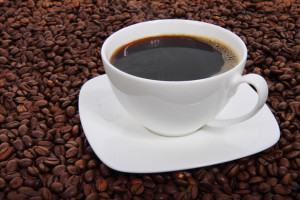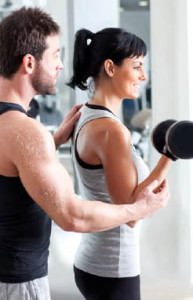The American College of Sports Medicine is (www.ACSM.org) the largest sports medicine and exercise science organization in the world. ACSM members strive to advance the science of exercise. Their research, presented at ACSM’s Annual Meeting, offers the latest information to help you reach your athletic and health goals. Last month, I reported some of the weight-related research presented at ACSM’s 2014 Annual Meeting. This month, I’m sharing some fueling and training updates that might be helpful.
• Does it matter if you eat quickly- or slowly-digested carbohydrates (with a high or low glycemic effect, such as candy vs. oatmeal) before you exercise? Likely not. A review of 21 research studies suggests the kind of carbs eaten pre-event have no clearly defined benefit on time trial performance or on endurance time to exhaustion. The bottom line: Eat what seems to work best for your body.
• Experienced CrossFit subjects who had a pre-workout drink (40 calories plus caffeine) had a significantly better workout compared to when they had the placebo drink (no calories, no caffeine) 20 minutes before they worked out. They did 503 vs. 477 repetitions of pull-ups, push-ups, and squats in 20 minutes. Fueling before you exercise has benefits.
 • Caffeine is known to enhance exercise capacity, helping some athletes more than others due to genetic differences. A study with self-reported “caffeine sensitive” students (who typically drank less than a cup of coffee a day) indicates pre-exercise caffeine helped them work harder during an exercise test, in comparison to subjects without a certain gene.
• Caffeine is known to enhance exercise capacity, helping some athletes more than others due to genetic differences. A study with self-reported “caffeine sensitive” students (who typically drank less than a cup of coffee a day) indicates pre-exercise caffeine helped them work harder during an exercise test, in comparison to subjects without a certain gene.
• Pre-exercise beet(root) juice has also been shown to help athletes postpone fatigue and increase endurance. It can enhance both low- and high-intensity aerobic performance, but it does not reduce muscular fatigue during 30 seconds of intense anaerobic exercise. Regardless, beets are a wise addition to a sports diet.
• Would combining pre-exercise caffeine with beet(root) juice offer even more performance benefits? Apparently not; a study reported no synergistic effects.
• If an athlete cannot tolerate fuel during hard exercise, some research suggests swishing and spitting a sweetened beverage can help boost performance. Receptors in the mouth send a message to the brain that helps the athlete keep working hard. Yet, a study with endurance-trained cyclists found no benefits with swishing-spitting during a one-hour time trial. The results were similar whether or not the subjects had fueled before the exercise test or had not eaten since dinner the night before. Still, no harm in trying to figure our what works for your body.
• Chocolate milk is a popular recovery choice that offers both carbohydrates to refuel depleted muscle glycogen stores as well as protein to help repair muscles. But should you choose non-fat or full-fat chocolate milk? Doesn’t matter, in terms of recovery benefits. Choose the milk you prefer based on your taste preferences, overall health and nutritional needs.
• Replacing sodium losses during and after exercise can play a role in preventing electrolyte imbalances and aiding rehydration. But the sodium concentration in sweat varies widely from athlete to athlete, so how can an athlete tell how much sodium he or she loses? To establish normative data, researchers collected sweat from 474 athletes (ages 9 to 63 years) representing a variety of sports. The average sweat sodium concentration was 1075 milligrams/liter; with a range from about 200 to 3000 mg/L. With this information, researchers can now collect sweat samples and then classify an athlete as having a low, average, or high sweat sodium. More easily, a salty, post-exercise crust on your skin suggests you likely have a high sweat-sodium level!
• Both training and genetics affects fitness. Identical twins had consistently similar results on fitness tests for handgrip strength, explosive strength, flexibility, and balance. In contrast, fraternal twins (with different genes) had differing test results. Did your parents do well by you?
 • To build muscle, most trainers encourage athletes to do 8 to 12 reps at 70 to 85% of one-repetition maximum. Can lifting lighter weights for more reps offer muscle-building benefits? Unlikely. Untrained people lifted heavy weights for 32 workouts. When they switched to lighter weights with more reps, they lost muscle. Keep lifting those heavy weights!
• To build muscle, most trainers encourage athletes to do 8 to 12 reps at 70 to 85% of one-repetition maximum. Can lifting lighter weights for more reps offer muscle-building benefits? Unlikely. Untrained people lifted heavy weights for 32 workouts. When they switched to lighter weights with more reps, they lost muscle. Keep lifting those heavy weights!
• The physique of professional tennis players has changed over time. A comparison of Grand Slam tennis players from1982 to 2011 suggests success in tennis is associated with greater muscles mass, as reflected in a higher BMI.
• While High-Intensity Interval training (HIIT) is known to enhance fitness, compliance is debatable—especially in untrained people. Would moderate-intensity interval training be a more acceptable alternative, and produce better training adaptations than “boring” continuous exercise? A study with inactive college females compared 20 minutes of continuous treadmill walking at a moderate pace vs. 20 minutes of alternating faster and slower walking. The subjects preferred the continuous exercise, reporting they would be more likely to stick with the easier program. The E in Exercise should stand for Enjoyment!
• Football fans like to eat. At Michigan State University, an estimated 528,000 spectators attended six home games in 2012 and purchased, on average, one food item per person. The top selling items were bottled water, 32-oz. soda pop, hot dogs, coffee/cocoa, and large pretzels. A survey indicated spectators want healthier options with lower prices. I certainly agree with those requests!
Copyright: Nancy Clark MS RD CSSD; February, 2015
Boston-area sports nutritionist Nancy Clark MS RD counsels both casual and competitive athletes at her private practice in Newton (617-795-1875). Her Sports Nutrition Guidebook and her food guides for runners, cyclists and soccer players are available at www.nancyclarkrd.com. Visit www.NutritionSportsExerciseCEUS.com for online education and information about upcoming live workshops

